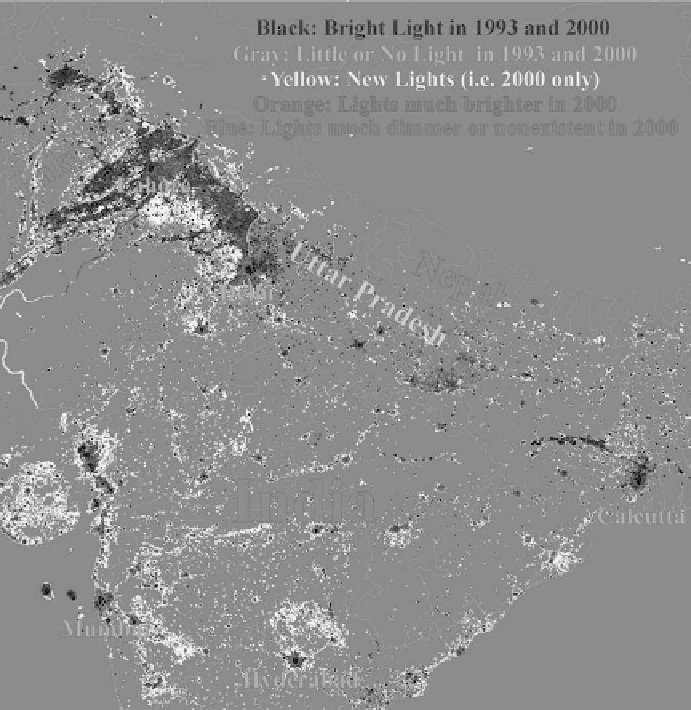Image Processing Reference
In-Depth Information
Fig. 17.4
Changes to nighttime lights on the Asian Sub-Continent 1993-2000
urban-wildland interface of homes that are at threat to wildfires, present problems
with human-wildlife interactions (mountain lion attacks, auto impacts with elk and
deer, etc.). Many of the costs associated with living in exurbia are born by the exur-
banites themselves; however, many are not (road maintenance, fire protection, etc.).
There is some debate as to whether or not exurban development is a unique and
unprecedented kind of development or if it is merely the beginning of suburbanization
(Long and Nucci
1997
; Nelson and Sanchez
1999
).
In any case, it is an interesting question to ask how much of the United States
would be classified as exurbia by the nighttime satellite imagery and how many
people actually live in these areas. This has been done based on a simple classifica-
tion of the low-gain DMSP OLS imagery (Fig.
17.6
). The exurban areas in Fig.
17.6
contain 37% of the U.S. population on 14% of the land area. It has not been deter-
mined if they share the same attributes of the exurban areas in the southwest corner

